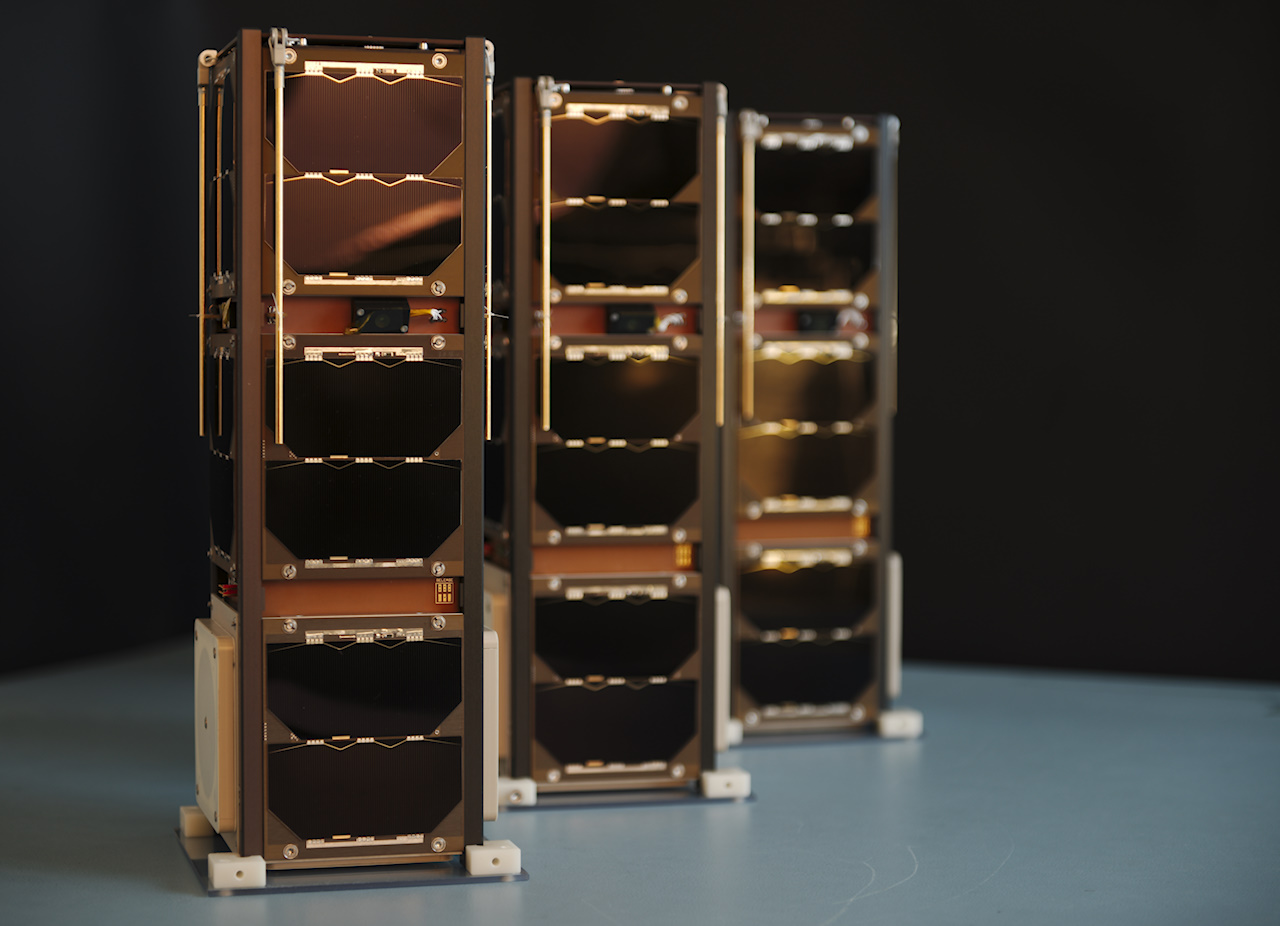Nanosatellite Beams Smartphone Voice Call for First Time

For the first time, a voice call has been made via a nanosatellite using a regular smartphone.
The voice call lasted more than a minute and went off without a hitch, said Meir Moalem, CEO of the United Kingdom-based startup Sky and Space Global.
"This was the first time that something like this was done via a nanosatellite," Moalem told Space.com. "The quality of the call was very good, and we are very happy with the result that we got." [CubeSats: Tiny, Versatile Spacecraft Explained (Infographic)]
During the testing, Sky and Space Global engineers also sent text messages, images and voice recordings via the company's three nanosatellites, dubbed the 3 Diamonds. The satellites, launched on June 23, circle the Earth in a sun-synchronous orbit at the altitude of 500 kilometers (310 miles).
Eventually, Sky and Space Global envisions building a constellation of 200 nanosatellites that would provide seamless communication services to people living in tropical regions where no communication capabilities currently exist.
"People in the Western world take communication infrastructure for granted," Moalem said. "But there are people in the world who can't make phone calls, who can't go and look up information on the internet, and we want to change that."
Sky and Space Global uses low-cost satellite terminals that can be installed in homes and are similar to Wi-Fi routers. The terminals would enable the occupants to make phone calls or use applications similar to WhatsApp to send text messages and images using regular, commercially available smartphones.
Get the Space.com Newsletter
Breaking space news, the latest updates on rocket launches, skywatching events and more!
That is a huge advantage compared to what is currently available in the market, Moalem said.
"There are companies, such as Iridium or Inmarsat, that enable voice calls via satellites," Moalem said. "But they usually require specialized phones that are very expensive, and that's something that people in developing countries can't afford."
Sky and Space Global's satellites weigh a few kilograms each, compared to the several-hundred-kilogram or even multiton craft of the company's competitors. The whole constellation is expected to cost about $150 million, which is two-thirds of the cost of a regular telecommunications satellite, Meidad Pariente, Sky and Space Global's technical director, told Space.com at a conference.
Earlier this summer, the company celebrated another "world's first" when it successfully sent data packages between its satellites.
"It was the world's first-ever intersatellite communication demonstration with nanosatellite[s]," said Moalem. "We made it up to ranges of up to 2,000 km [1,240 miles], moving data from one satellite to another."
Until recently, nanosatellites have been predominantly used for Earth observation and imaging, Moalem said, but with advancements in miniature space technology, the satellites' capabilities have grown increasingly sophisticated in recent years.
"Usually, people think of space systems as something very expensive," said Moalem. "That's not the case for us. We are a new space company, using new space technology, and the investment required to develop this technology and deploy these satellites to space is just extremely low."
By the end of this year, the company hopes to demonstrate streaming of data from an airplane's black box via the 3 Diamonds, according to Moalem. The full constellation is expected to be operational by 2020. Before that, the 3 Diamonds could be used for machine-to-machine communication and internet-of-things applications, Moalem said.
Follow us @Spacedotcom, Facebook and Google+. Original article on Space.com.
Join our Space Forums to keep talking space on the latest missions, night sky and more! And if you have a news tip, correction or comment, let us know at: community@space.com.

Tereza is a London-based science and technology journalist, aspiring fiction writer and amateur gymnast. Originally from Prague, the Czech Republic, she spent the first seven years of her career working as a reporter, script-writer and presenter for various TV programmes of the Czech Public Service Television. She later took a career break to pursue further education and added a Master's in Science from the International Space University, France, to her Bachelor's in Journalism and Master's in Cultural Anthropology from Prague's Charles University. She worked as a reporter at the Engineering and Technology magazine, freelanced for a range of publications including Live Science, Space.com, Professional Engineering, Via Satellite and Space News and served as a maternity cover science editor at the European Space Agency.









